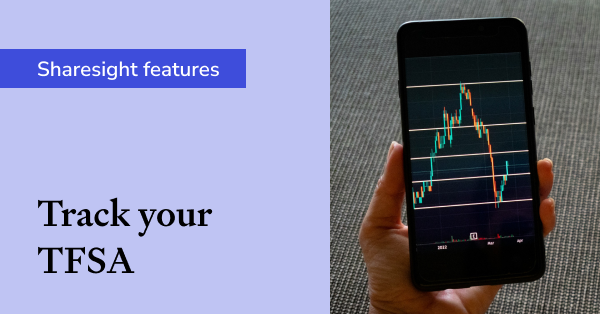How to calculate your 2018 FIF income
NOTE: There is a newer version of this article. See How to calculate your NZ FIF income for more information.
Portfolio tax reporting can be a real hassle. This is especially true for New Zealand residents with offshore holdings such as foreign shares and managed funds. That’s because certain overseas holdings are taxed under the New Zealand foreign investment fund (FIF) rules, which means there are special tax requirements for investors who hold them.
As a New Zealand based company, Sharesight was built for self-directed Kiwi investors. To help you navigate the FIF rules, we’ve pulled together some background information on the scheme, including some recent changes that have taken place. We’ll also show you how to use Sharesight to determine whether your holdings are subject to the foreign investment rules, and automatically calculate your FIF income if that’s the case.

What is a foreign investment fund (FIF)?
As stated by the New Zealand Inland Revenue Department (IRD), a foreign investment fund (FIF) is an offshore investment held by a New Zealand-resident taxpayer who holds:
- less than 10% of the shares in a foreign company
- less than 10% of the units in a foreign unit trust
- between 10% and 40% of the shares in a foreign company which is not a CFC
- an interest in a life insurance policy where a FIF is the insurer and the policy is not offered or entered into in New Zealand
- an interest in a foreign superannuation scheme
It does not include interest earned from term deposits, bonds, debentures or money lent.
Changes to FIF exemptions
Before we go any further, here’s a bit of background information:
- In previous years, the IRD published an Australian share exemption lists – also known as the IR871.
- The list indicated whether an Australian company listed on the ASX (excluding listed investment companies) was exempt from the FIF rules for that financial year.
- The IRD enacted changes from 1 April 2017 to simplify the exemptions list.
- The key change is basically the removal of any reference to an approved index and instead the company simply has to be on the official list of ASX limited (other rules still apply).
- These changes take effect for the 2017-2018 tax year and beyond.
Steps to calculate your 2017-2018 FIF income
As a result of these IRD rules, investors who have certain types of overseas investments may have FIF income. And while the IRD has an online tool that lets you check if you are required to do anything under the FIF rules, if you determine that you do, the actual calculations can get quite complicated.
The good news is that investors on a Sharesight NZ Expert or Sharesight NZ's professional plan can run their own FIF Report in just a few clicks. Here’s how to do it:
1. Determine which of your holdings are subject to FIF
Sharesight automatically flags any holdings within your portfolio which are subject to FIF rules:

NOTE: Update 29 March - we have updated the list of holdings and taken the FIF report out of "draft" mode.
We recommend double-checking your FIF-included companies against the IRD calculator. If you notice any holdings that are not automatically included/excluded by Sharesight, please leave a message on our Community Forum.
2. Calculate your ‘peak holding balance’
Sharesight determines whether you exceed the FIF threshold ($50,000 for individuals). Based on the example above, the answer is “yes” because the peak balance is $168,385.34.
3. Calculate your FIF income
If you exceed the FIF threshold, clicking the “Calculate” button will automatically calculate your FIF income under both the Fair Dividend Rate Method and Comparative Value Method (generally you are permitted to use either methodology, but check with your accountant if you are unsure as there are some exceptions):

Why struggle with maths equations and complicated tax rules when Sharesight can calculate your FIF income for you, in just a few clicks? Our Expert and Pro plan clients agree:
I used the FIF reports for the first time and it greatly assisted the preparation of 2013/14 years tax returns. Sent copies of report to IRD with the returns and it was no problem. Well done Sharesight and well worth upgrading to include this reporting facility.
RICHARD MADDREN — SHARESIGHT CLIENT SINCE 2008
We have been using this great app for several years. It makes it easy to review portfolio performance, keep track of income and manage those awful FIF calculations at tax time. The subscription is easily recovered in time savings at year end...
MARGARET HOLMES — SHARESIGHT CLIENT SINCE 2010
Get your FIF Report today
By compiling all your portfolio data in one place, Sharesight eliminates the paper-chase and headaches normally associated with performance and tax reporting. To get started, simply signup for a FREE Sharesight account and add your holdings. From there you can upgrade to an NZ Expert plan for only $39/month to get INSTANT access to your FIF Report, as well as other premium features including:
- Traders Tax Report
- Diversity Report
- Benchmarking
- Contribution Analysis Report (useful for Asset Allocation)
MORE INFO
- Help -- FIF Report
FURTHER READING

Track stocks on the London Stock Exchange with Sharesight
With Sharesight, you can automatically track the price and performance of thousands of stocks and ETFs on the London Stock Exchange (LSE).

Track your TFSA with Sharesight
You can easily track your Tax-Free Savings Accounts (TFSAs) in Sharesight, in addition to your non-registered, RRSP, and RRIF accounts.

Top 50 finance and investing podcasts in 2024
The Sharesight team has put together a list of the top 50 investing, personal finance and business news podcasts worldwide.